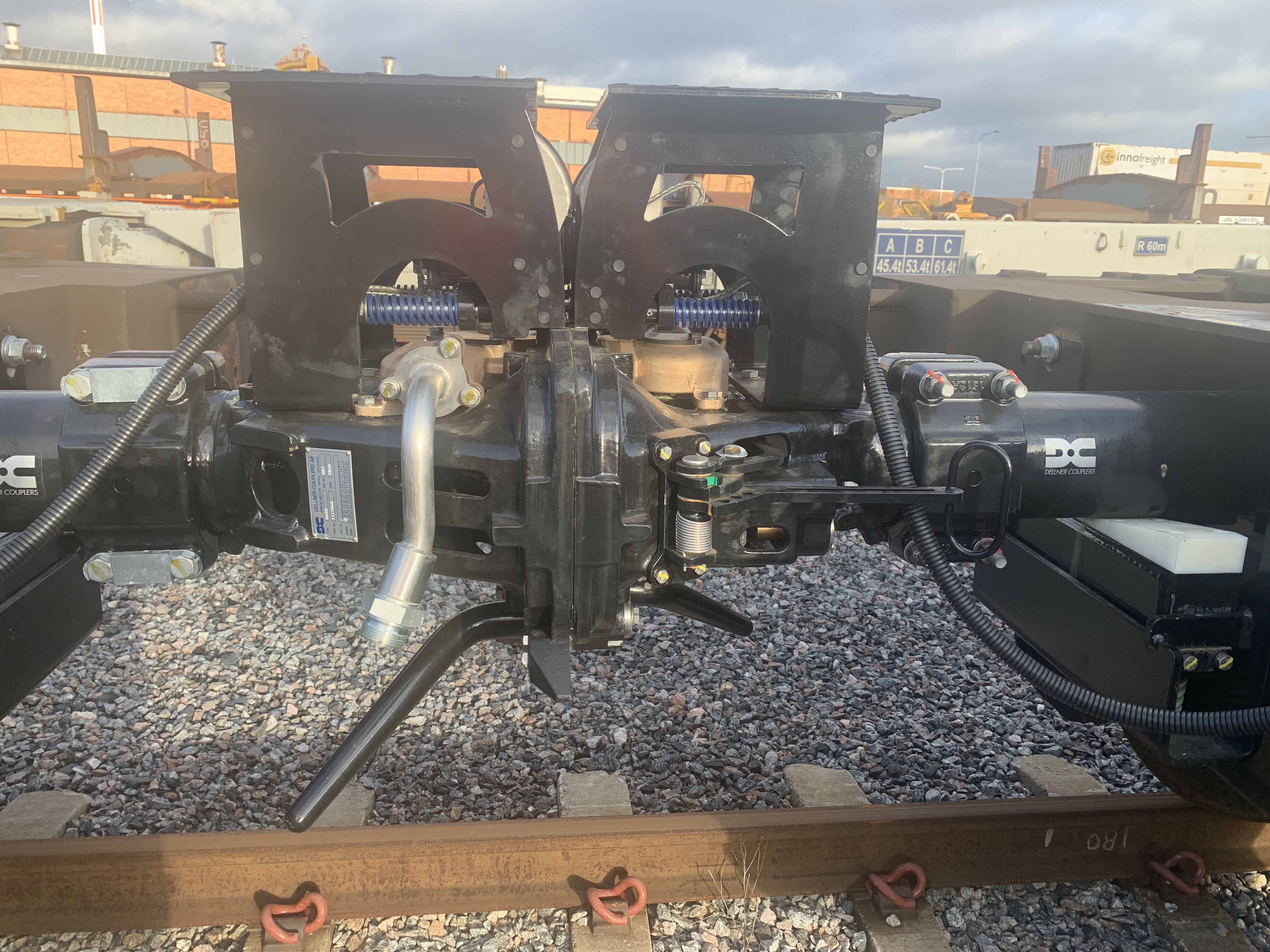Automatic couplers have many advantages for the industry and enables; safer working conditions, more efficient shunting and increased volume by running longer and heavier trains. This streamlining is an important part of transitioning more freight from road to rail.
Annette Bernström, Wagon Manager at Green Cargo, why have you chosen to take part in the winter tests of digital automatic couplers (DAC) that are currently underway?
There are many contributing factors to our participation in the winter tests. We want to be involved and contribute to the implementation of standardized automatic couplers in Europe and as the largest freight operator in Sweden, we see that it is important that we participate in the development work. We have other challenges in Scandinavia linked to winter conditions, and therefore it is absolutely critical that we participate in cross-border and industry-wide tests before a decision is made on a common, European standard.
Safety is a first priority within Green Cargo and we see that the use of automatic couplers in the long run will increase safety at our railway yards as well as it will improve the working environment for our employees in production.
We also want to contribute to streamlining rail traffic by running longer and heavier trains Digital Automatic Couplers plays a vital part towards our ambition of running longer and heavier trains.
The projects initial plan was to test four different types of automatic couplers from four suppliers, however this has been reduced to tests of two different types. The main reason for this is problem with delivery from one supplier due to production problem and one supplier has done a check of the design before the test continues.
What manual tasks will not be needed when digital automatic couplers are fully implemented?
This shift in technology will eventually decrease manual shunting work and quicken the process of building trains. Furthermore, the technology enables to gather more information in the locomotive from e.g. the braking system throughout the whole train, which subsequently can be used for automatic braking tests prior to departure.
In what way can this streamline deliveries?
Through faster coupling of trains, we can free up capacity at terminals and the railway yards resulting in a more even production flow. In the long run, this means more efficient use of wagons and more competitive lead times for our customers.
What do you think an advanced automatic coupler (level 5, i.e. automatic coupling and decoupling, power supply and communication through the train) can mean for Green Cargo's operations?
It provides smoother and faster handling when coupling trains. We can eliminate manual work and thereby reduce the risk of accidents. It is also an enabler for further increased automation throughout the railway operation. As wagon owners, we can work with predictive maintenance with surveillance functions and we can proactively monitor our vehicles.
